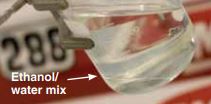Motor Oil Turning Black Isn’t an Indicator of Bad Oil John Baker|Oct 11, 2018 2:00 PM What causes black motor oil? And when your oil darkens does it mean it’s time to change it? Well, there are a couple of factors that can cause the former. Let’s dig in. Factors causing black motor oil Heat […]
You are browsing archives for
Category: Tech Articles
Soot isn’t just for diesels anymore
Soot isn’t just for diesels anymore Today’s gas engines can produce as much soot as yesterday’s diesels. Matt Erickson | TECHNICAL MANAGER – PCLT PRODUCTS AND MECHANICAL R&D I bet most of you reading this have some level of emotional attachment to traditional vehicles. The muscle-car era of the 1960s and 1970s kindled a lifelong […]
Solve ethanol issues before they arise
Prevent Ethanol Issues Now The fuel some love to hate isn’t the problem – letting gasoline sit too long is the real problem. Len Groom | TECHNICAL PRODUCT MANAGER How did an alternative fuel made mostly from corn grown in the Midwest become a political lightning rod? Whatever the reason, ethanol is always a controversial […]
How do we define “severe service”?
How do we define “severe service”? When pushing our lubricants to their limits, we sometimes find the limits of the test equipment first. Matt Erickson | TECHNICAL MANAGER – PCLT PRODUCTS AND MECHANICAL R&D One of my responsibilities here at AMSOIL is to help develop tests in our mechanical lab designed to push lubricants to […]



